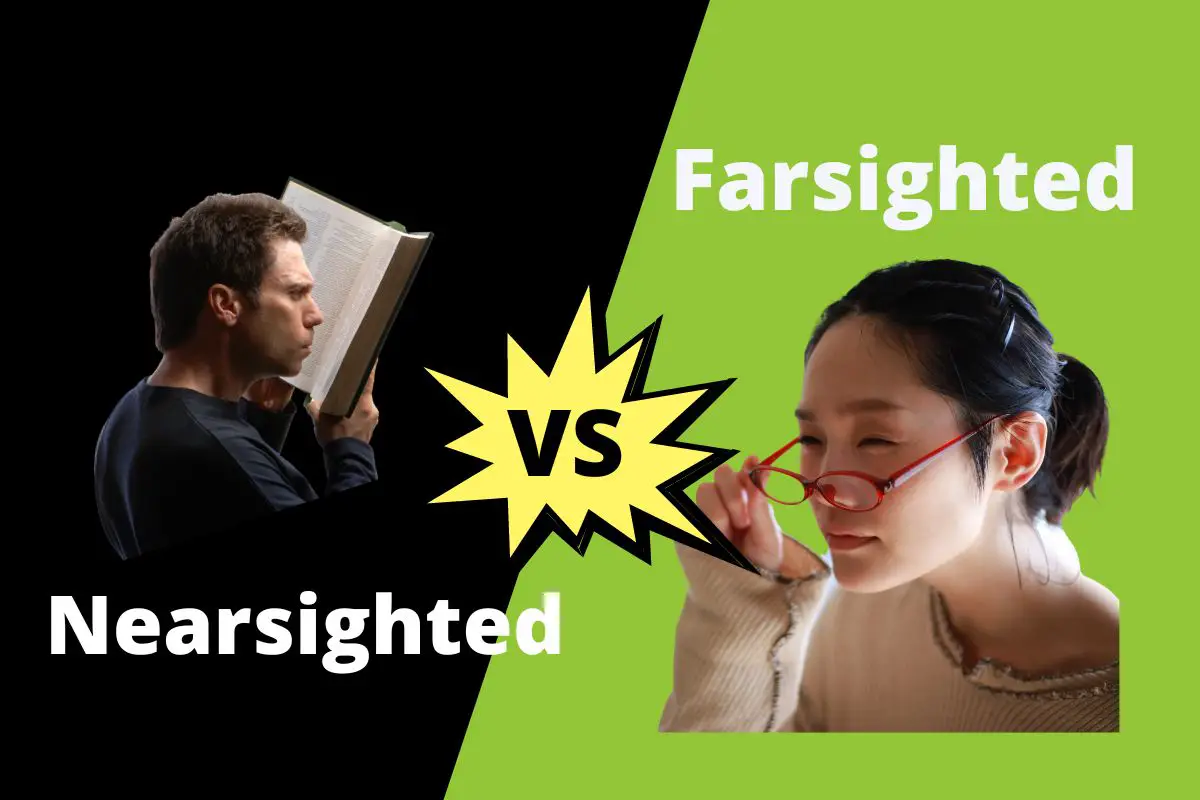A person with nearsighted vision can clearly see nearby objects, while distant objects get blurred. On the other hand, a person with farsighted vision can clearly see distant objects, while nearby objects get blurred.
Table of Contents
What is Near Sighted Vision or Nearsightedness?
If you can clearly see nearby objects but not distant ones, you’ve got nearsighted vision. In other words, you’re myopic. Nearsightedness is a widespread condition among children and adults. It can be improved using eyeglasses, surgeries, etc. In myopia, the eyeball is too long or the cornea is too curved.
Causes
According to the American Refractive Surgery Council, myopia or nearsightedness can occur due to family history. It could get worse due to excessive usage of mobile phones, computers, and other electronic gadgets.
If you have myopia, the light from the objects isn’t focused on your retina. This is due to a refractive error (as termed by an eye doctor or optometrist) related to the shape of your eyes.
Note: According to the American Optometric Association, any visual stress or health condition like diabetes also leads to myopia.
Symptoms
As aforementioned, the main symptom of nearsightedness is difficulty seeing distant objects. For example, trouble reading what’s written on the whiteboard in class or road signs while driving.
Other symptoms of myopia include:
- Eye fatigue
- Excessive blinking
- Headache

What is Farsighted Vision or Farsightedness?
Unlike nearsighted vision, farsighted vision limits the focus on close-up objects. As a result, they don’t appear very clear to you. It’s also called hyperopia in medical terms.
Again, you can try several treatment options to improve your vision, for example, Lasik surgery.
Causes
Farsightedness is generally inherited. In this condition, the cornea is flat, or the eyeball is shorter than usual.
Note: People diagnosed with ADD/ADHD and strabismus are mostly farsighted.
Symptoms
The common symptoms of farsightedness include:
- Blurred nearby objects
- Squinting
- Burning eyes
- Aching in or around your eyes

Near Sighted vs Far Sighted – What’s The Difference?
| Near Sighted | vs | Far Sighted |
| Myopia | Medical Name | Hyperopia |
| Nearby objects appear clear | Visibility | Distant objects appear clear |
| It occurs when the light is focused in front of the retina rather than on it. | How Does Each Happen | It occurs when the light is focused on the back of the retina rather than on it. |
| Elongated | Length Of The Eyes | Shortened |
| Negative (-) numbers | Nature Of Numbers On The Eye Prescription | Positive (+) numbers |
| Thinner in the center and thicker at the edges | Lens | Thicker in the center and thinner at the edges |
Let’s now understand some crucial differences between farsighted and nearsighted vision.
Medical Name
The medical term for nearsightedness is myopia, while farsightedness is also called hyperopia.
Visibility
If you have nearsighted vision, you’ll be able to see all nearby objects, but not distant objects. On the other hand, farsightedness blurs your nearby vision. Your distant vision remains normal.
How Does Each Happen
Nearsightedness occurs when the light is focused in front of the retina rather than on it. On the other hand, farsightedness happens when light is focused behind the retina rather than on it.
Eye Length
In myopia, the eyeball is slightly elongated. The eyeball is shortened in hyperopia.
Eye Prescriptions: What the Numbers Mean
Both the vision conditions are treatable with corrective lenses. You’ll notice negative (-) numbers on your eye prescription if you’ve nearsighted vision. Here, “-” means subtracting the eye’s focusing power.
On the other hand, an eye prescription for a farsighted individual has positive (+) numbers. Here, “+” means to add focusing power to the eye.
Lens
The nearsighted lenses are thinner in the center and thicker at the edges. In contrast, the farsighted lenses are thicker in the center and thinner at the edges.
Conclusion
Nearsightedness and farsightedness are two vision conditions prevalent in both children and adults. While the former affects your distant vision, the latter limits how you see nearby objects. If you’re concerned about vision problems, the best thing to do is to see an eye care professional for an eye exam.
Besides, there are many other differences between the two. For example, corrective lenses, the shape of the eyes, numbers on the eye prescription, etc.
Treatments for Nearsightedness and Farsightedness
If you’re concerned about vision problems, the best thing to do is to see an eye care professional for an eye exam.
Some possible treatments could include:
- Lasik
- Photorefractive Keratectomy (PRK)
- SMILE
- Refractive lens exchange
- Cataract surgery
Nearsightedness and Age
According to the American Academy of Ophthalmology (AAO), the nearsightedness condition doesn’t change much until age 40. Thus, you must either undergo surgery or corrective lenses to keep it from worsening.
Treating Astigmatism
Astigmatism is another vision condition in which there’s an imperfection in the eye’s curvature. Your eye care professional can tell you if you have astigmatism and how to proceed.

